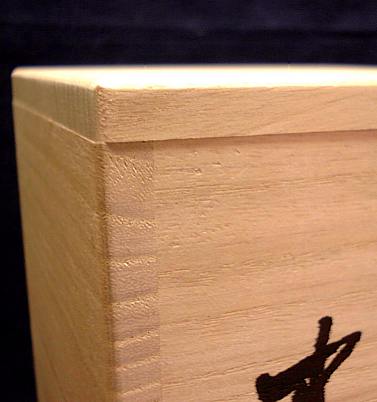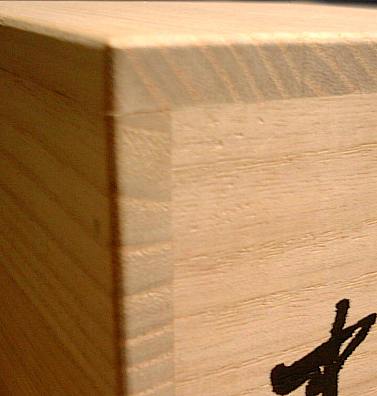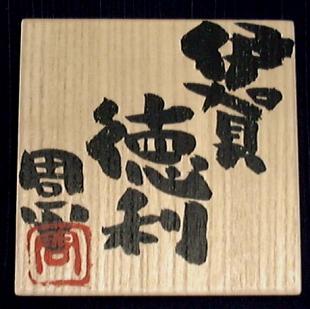The BOX In the West, one never really
pays much attention to the box after receiving a gift or
after making a purchase for oneself. It's simply there
to hold the contents and then be thrown away. It doesn't
really tell us anything about the contents other than
possibly the status of the store.
The potter will carefully select a tying rope that adds a little class to the package as well as for keeping the lid in place. There is a certain way to put the lid on and how to tie it. For example, the below photo shows the grain of the box and the lid not matching up. This is the improper way.
But in the next photo, the grain matches up and forms a square. This is the proper way.
Some potters even stamp the box and the lid to show where the sides should line up. The value of a box, moreover, plays a significant role in determining the price of the contents. In Japan the value of an artwork can be halved if there is no original signed box. If there's a box signed by the artist's son or apprentice, this will also decrease the value as opposed to a piece that was in an original box signed by the artist himself. So, that's one big reason to keep boxes in good condition. Further, many galleries and collectors often wrap the boxes to keep them in pristine condition and thus fetch a higher price. A box also protects a piece from moisture in the summer and other natural elements. As many know, calligraphy is a highly respected art form in the east and many a potter is also quite adept with a brush. Some of the writing on boxes is wispy and gives off the feeling of incense smoke drifting away (1st photo below). Others write with strokes that are bold and forceful and imbued with a determined spontaneity (2nd photo below).
Many times a tomobako will have a piece of paper over it. This is to protect the calligraphy. The writing usually begins on the upper right hand corner of the side, or the top of the lid or underside of the lid. Some potters even sign the bottom of the box itself, so be sure to give the box a good looking over. The calligraphy can tell the style, the form, any special glazes, the year, and the name of the kiln. Most potters usually sign only their first name on the lower left. The box indeed plays a significant role in the value and protection of most Japanese pottery, despite the fact that the greatest joy comes from taking the piece out of the box and appreciating it in our daily lives. For more about Japanese wooden boxes, see Tomobako |




